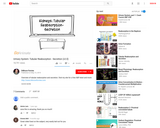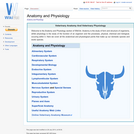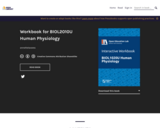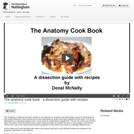
Short video on urinary system anatomy for anatomy and physiology.
- Subject:
- Anatomy/Physiology
- Applied Science
- Health, Medicine and Nursing
- Life Science
- Material Type:
- Activity/Lab
- Author:
- Dr. Bruce Forciea
- Date Added:
- 04/02/2018

Short video on urinary system anatomy for anatomy and physiology.

Short video on tubular reabsorption and secretion for anatomy and physiology.
![Using Regression Models to Examine the Effect of Carbon Dioxide on Fluid pH [version 1.0]](https://oercommons.org/static/newdesign/images/materials/default-thumbnail-index.png)
In this activity students will use statistics and regression models to explore the effects of carbon dioxide on blood pH by measuring pH changes that occur over time as carbon dioxide reacts with water to form carbonic acid. Physiological pH changes caused by exercise are also examined.

Welcome to the Anatomy and Physiology section of WikiVet. Anatomy is the study of form and structure of organisms, whilst physiology is the study of the function of an organism and the processes, physical, chemical and biological, occuring within it. Here we cover all the anatomical and physiological points that make up our domestic species and exotic species.

Students are presented with the unit's grand challenge problem: You are the lead engineer for a biomaterials company that has a cardiovascular systems client who wants you to develop a model that can be used to test the properties of heart valves without using real specimens. How might you go about accomplishing this task? What information do you need to create an accurate model? How could your materials be tested? Students brainstorm as a class, then learn some basic information relevant to the problem (by reading the transcript of an interview with a biomedical engineer), and then learn more specific information on how heart tissues work their structure and composition (lecture information presented by the teacher). This prepares them for the associated activity, during which students cement their understanding of the heart and its function by dissecting sheep hearts to explore heart anatomy.
![Why does Blood Flow Change? Investigating the Math of Blood Flow Dynamics [version 1.0]](https://oercommons.org/static/newdesign/images/materials/default-thumbnail-index.png)
This collection of activities explores the relationship between blood flow, pressure, and the factors of resistance through graphs and modeling direct and inverse variation.

Word Count: 2424
(Note: This resource's metadata has been created automatically by reformatting and/or combining the information that the author initially provided as part of a bulk import process.)

The Anatomy Cookbook has been written to accompany an anatomy and physiology course for bioengineers who would otherwise have missed out on the opportunity to study real organ systems at first hand. It is not an alternative to a standard anatomy text, it acts more as a laboratory supplement. The fun bit is that your kitchen takes the place of the dissection room. Each recipe provides an insight into one or more organs, and all you need to do is go to the supermarket and be prepared to think about your food in a radically different way.
In this videocast Donal McNally talks about the reasons that led to and rationale behind the release of his anatomy cook book on the internet.
Presentation delivered June 2009
Suitable for Undergraduate Study
Dr Donal McNally, Associate Professor and Reader in Bioengineering, Department of Mechanical, Materials and Manufacturing Engineering.